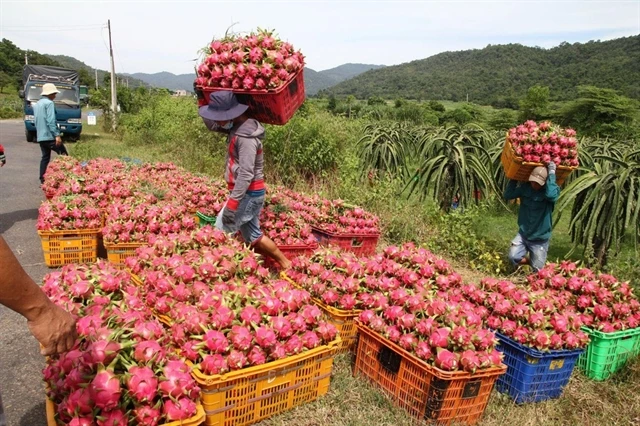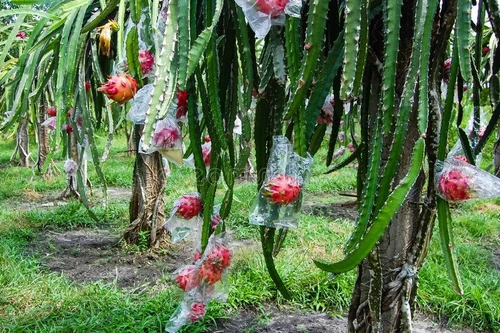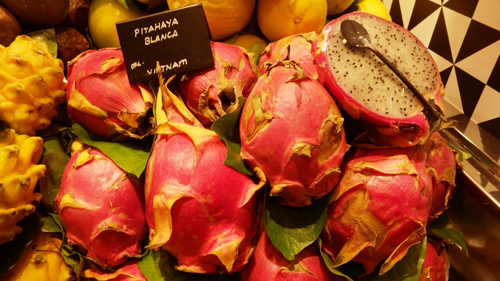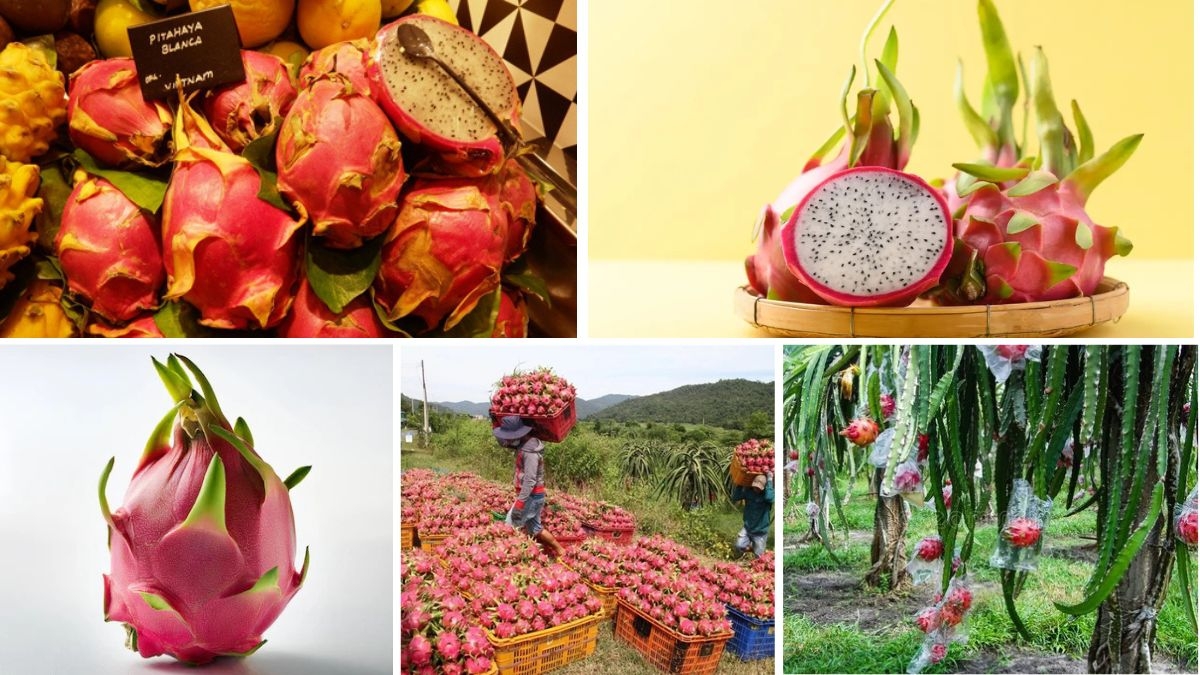Dragon fruit (Hylocereus spp.), also known as pitaya, has emerged as a global favorite due to its striking appearance, unique flavor, and impressive health benefits. Native to southern Mexico and parts of Central America, this tropical fruit has found a welcoming environment in various countries worldwide. Today, several nations lead in dragon fruit production, each contributing uniquely to the global market. This article delves into the top countries excelling in dragon fruit cultivation, exploring their production volumes, export dynamics, and the factors contributing to their success.
1. Vietnam: The Global Leader

Vietnam stands as the undisputed leader in dragon fruit production. The country’s favorable tropical climate, coupled with advanced agricultural practices, has enabled it to dominate the global market.
- Production Volume: Vietnam accounts for over 50% of the world’s dragon fruit production. The majority of this produce is cultivated in the southern provinces, particularly Bình Thuận, Long An, and Tiền Giang.
- Export Dominance: In 2024, Vietnam exported dragon fruit worth approximately $600 million, representing 85% of the global market share. Major export destinations include China, India, the European Union, and the United States .
- Cultivation Practices: Vietnamese farmers employ modern techniques such as high-density planting, precision irrigation, and the use of biostimulants to enhance yield and fruit quality.
2. China: A Significant Producer and Exporter

China, while not the largest producer, plays a crucial role in the dragon fruit industry, both as a producer and a major importer.
- Production Areas: The Guangxi Zhuang Autonomous Region and the provinces of Hainan and Yunnan are the primary cultivation zones for dragon fruit in China.
- Import Dynamics: Despite domestic production, China imports significant quantities of dragon fruit, primarily from Vietnam, to meet the growing domestic demand.
- Market Trends: The increasing popularity of dragon fruit among Chinese consumers has led to a rise in local cultivation and consumption, making China a pivotal player in the global market .
3. Thailand: Expanding Cultivation and Export
Thailand has rapidly expanded its dragon fruit cultivation, becoming a significant exporter in recent years.
- Production Growth: The northeastern and central regions of Thailand have seen a surge in dragon fruit farms, with an emphasis on organic farming practices.
- Export Markets: Thailand exports dragon fruit to various countries, including China, Japan, and the United States, capitalizing on its proximity to these markets and the rising demand for exotic fruits.
- Government Support: Thai agricultural policies have supported the growth of dragon fruit farming through subsidies, research, and development programs aimed at improving cultivation techniques and fruit quality.
4. Ecuador: Emerging Exporter in South America

Ecuador has emerged as a prominent dragon fruit exporter in South America, leveraging its favorable climate and strategic location.
- Cultivation Regions: The coastal provinces of Guayas and Los Ríos are known for their dragon fruit farms, benefiting from the region’s tropical climate.
- Export Growth: Ecuador’s dragon fruit exports have seen significant growth, with the United States and European Union being the primary importers.
- Quality Standards: Ecuadorian farmers adhere to international quality standards, ensuring that their dragon fruit meets the expectations of global consumers .
5. Israel: Innovating in Desert Agriculture

Israel, known for its advancements in agricultural technology, has successfully cultivated dragon fruit in arid regions.
- Desert Farming: Utilizing innovative irrigation systems and greenhouse technologies, Israel has transformed its desert landscapes into productive dragon fruit farms.
- Export Potential: While domestic consumption is the primary focus, Israel’s expertise in agriculture positions it as a potential exporter of dragon fruit in the future.
- Research and Development: Israeli agricultural institutions continuously research ways to improve dragon fruit cultivation, focusing on water efficiency and disease resistance.
6. India: Rapidly Growing Domestic Industry

India’s dragon fruit industry is in its nascent stages but is expanding rapidly due to increasing domestic demand and favorable growing conditions.
- Cultivation Regions: States such as Maharashtra, Tamil Nadu, Gujarat, and Kerala have seen a rise in dragon fruit cultivation, with government initiatives supporting farmers.
- Domestic Consumption: The growing awareness of the health benefits of dragon fruit has led to increased consumption within the country.
- Export Potential: While exports are currently limited, India’s expanding production capacity and improving quality standards suggest a promising future in the global market .
7. Other Notable Producers
Several other countries contribute to global dragon fruit production, each with unique characteristics:
- Mexico: As the native home of dragon fruit, Mexico continues to produce the fruit, focusing on both domestic consumption and regional exports.
- Colombia and Nicaragua: These Central American countries have seen a rise in dragon fruit farming, with an emphasis on organic production for niche markets.
- Malaysia and Indonesia: Both countries have favorable climates for dragon fruit cultivation and are focusing on expanding their domestic markets and exports.
- United States: In states like California and Florida, dragon fruit cultivation is gaining traction, primarily for local markets, with potential for expansion into export markets.
Conclusion
The global dragon fruit industry is characterized by diverse production practices and market dynamics. Vietnam leads the world in both production and export, setting standards for quality and innovation. Other countries like China, Thailand, Ecuador, Israel, and India are making significant strides, each contributing uniquely to the industry’s growth.
Understanding the factors that drive success in dragon fruit cultivation—such as climate suitability, technological adoption, export infrastructure, and market demand—is crucial for stakeholders aiming to enter or expand in this burgeoning market. As consumer interest in exotic and healthful fruits continues to rise, the global dragon fruit industry is poised for sustained growth and innovation.






Leave A Comment